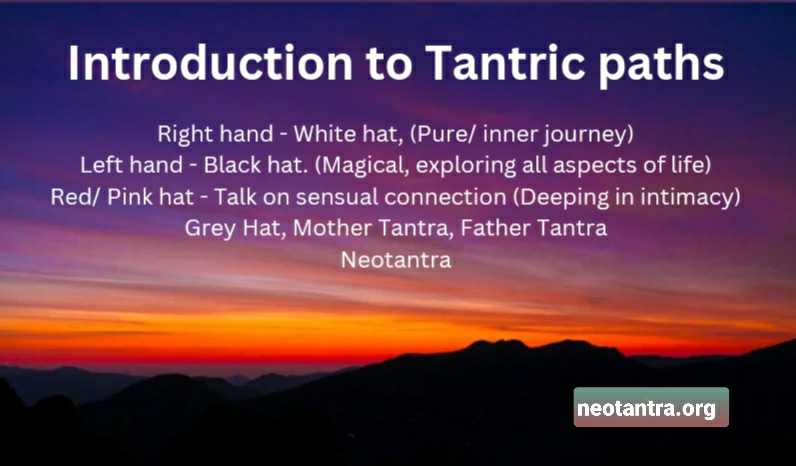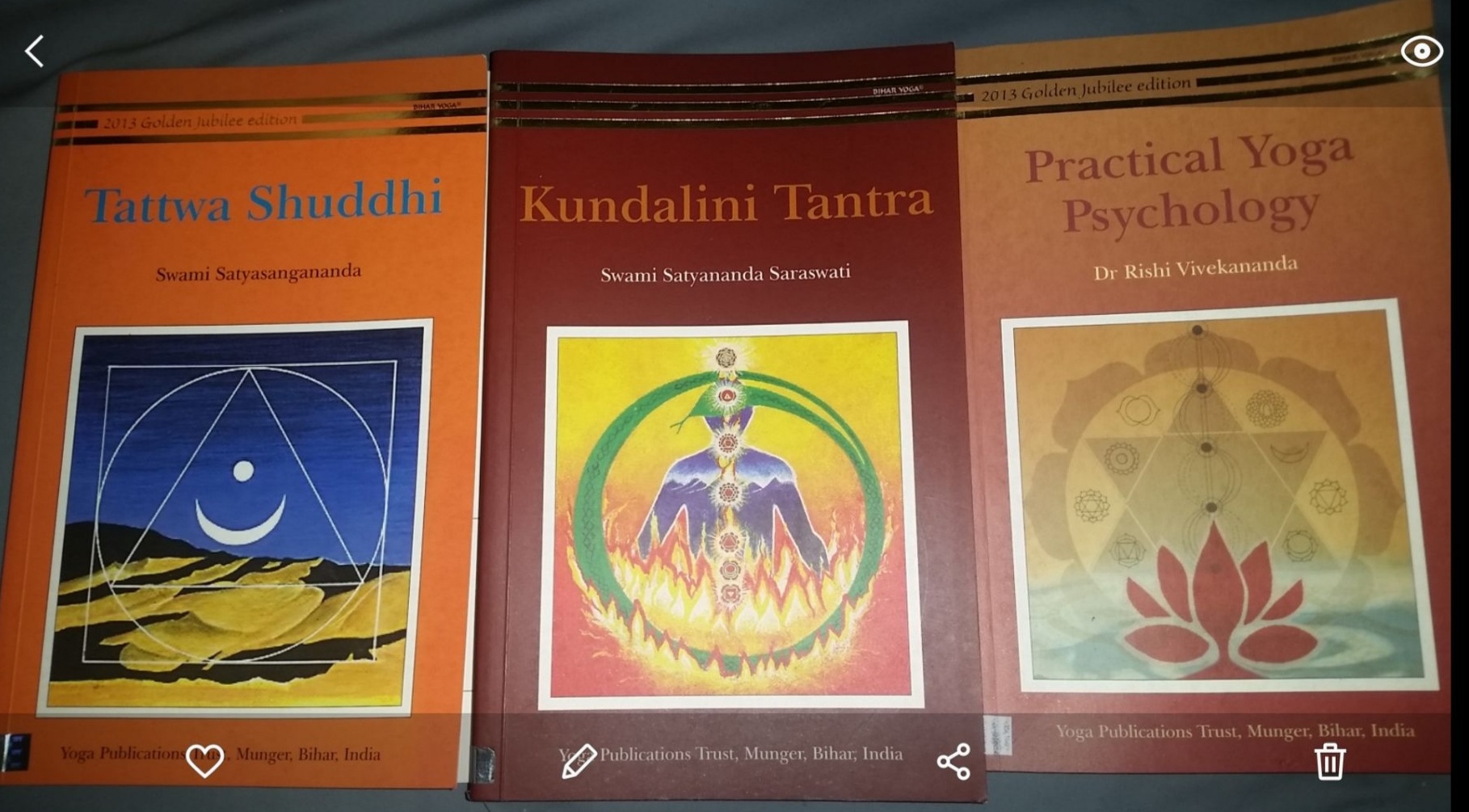The Tantric lifestyle is a holistic approach to living that emphasizes the integration of mind, body, and spirit. Tantric practices can have a range of benefits including…
Increasing spiritual awareness: Wisdom to cultivate greater spiritual awareness and connection to the divine. Through practices such as meditation, yoga, and devotion, practitioners can deepen their understanding of themselves and the world around them.
Improved physical health: Yoga and pranayama (breathing exercises), are known for their physical health benefits. Regular practice can improve flexibility, strength, and cardiovascular health, as well as reduce stress and anxiety.
Greater emotional balance: Tantric practices can help practitioners release negative emotions and cultivate greater emotional balance and stability. This can lead to improved relationships and a greater sense of overall well-being.
Enhanced sexual and sensual experiences: In Red hat, Pink hat and certain left hand paths of Tantra, their is a strong emphasis on sensuality and sexual energy. Practitioners can learn to channel this energy in a way that leads to deeper intimacy and connection with their partners, as well as heightened sexual pleasure.
Increased creativity and self-expression: Tantra encourages creativity and self-expression in all areas of life. Through practices such as art, music, and dance, practitioners can tap into their creative potential and express themselves authentically.
Greater sense of purpose: Tantric practices can help practitioners find a deeper sense of purpose and meaning in their lives. By aligning their actions and intentions with their spiritual beliefs, practitioners can live with greater intention and direction.
Improved relationships: Tantric practices can improve relationships by helping practitioners cultivate greater compassion, empathy, and understanding. By developing deeper connections with others, practitioners can experience greater joy and fulfillment in their relationships.
These are just a few of the many benefits of the Tantric lifestyle. Ultimately, the specific benefits will vary depending on the individual practitioner and their particular practice. However, the holistic approach to living that Tantra promotes can lead to greater overall health, happiness, and fulfillment.
Heart Awareness helps reduce your ego, for more peace and harmony
The heart is often associated with emotions such as love, compassion, and empathy. Cultivating these qualities can help reduce our ego by shifting our focus away from ourselves and towards others.
When we focus on our own ego, we may become overly concerned with our own desires, needs, and wants. This can make it difficult to connect with others and build meaningful relationships. However, when we focus on our heart and cultivate qualities such as love, compassion, and empathy, we become more attuned to the needs and feelings of others. This can help us build stronger, more fulfilling relationships and reduce our reliance on our ego to meet our needs.
In addition, practicing mindfulness and meditation can help us become more aware of our own ego and its tendencies. By observing our thoughts and emotions without judgment, we can begin to recognize when our ego is taking over and choose to respond in a more heart-centered way.
Ultimately, reducing our ego is a gradual process that requires ongoing effort and self-awareness. By cultivating qualities of the heart and practicing mindfulness, we can become more attuned to ourselves and others, and build deeper, more meaningful connections in our lives
Achieving high emotional intelligence
Emotional Intelligence is the ability to recognize and manage emotions in oneself and others. A high EI means that an individual possesses strong emotional intelligence skills, which can lead to a variety of positive outcomes in both personal and professional contexts.
Here are some traits commonly associated with individuals who have high EI:
Self-awareness: People with high EI are typically highly self-aware, meaning that they have a deep understanding of their own emotions and how they affect their behavior.
Embracing emotions: By accepting and loving what emotion is being felt. Some encourage you not to identify with the emotion but to just observe it and to understand it then to be with what is.
Empathy: High EI individuals are often skilled at empathizing with others, meaning that they can understand and share the emotions of others.
Self-regulation: Those with high EI can typically manage their emotions well and are less likely to be overwhelmed by negative emotions.
Motivation: Individuals with high EI are often highly motivated and driven, as they are able to use their emotions to fuel their goals and aspirations.
Social skills: People with high EI are typically good at navigating social situations and building positive relationships with others.
Overall, having a high EI can lead to improved communication, better relationships, and increased success in both personal and professional contexts. It is a valuable skill to develop and can be improved through intentional practice and self-reflection.
Understanding a few of the paths and fundamentals of Tantra
Tantra is a complex and multifaceted spiritual tradition that encompasses a wide variety of beliefs and practices. One way to understand the different “hats” or aspects of Tantra is to explore some of the main themes and practices that are commonly associated with this tradition:
Meditation is a core foundation in practising Tantra, if that’s through focusing on breath, energy (prana/ chi), sound, any of your senses. Cultivating presence, a primary goal in a Tantric lifestyle. Achieved by any practice which brings you into the moment. Eg, Art, Surfing, Playing, Music, Climbing, Dancing ect.
Shakti or Divine Feminine: One of the key aspects of Tantra is the worship of the divine feminine energy, known as Shakti. This energy is seen as the creative force behind the universe and is often depicted in the form of a goddess. Practices that honor Shakti may involve mantra recitation, visualization, and ritual offerings.
Kundalini: Another central concept in Tantra is Kundalini, the serpent-like energy that is said to reside at the base of the spine. The goal of many Tantric practices is to awaken and raise this energy through the chakras, or energy centers, in the body, leading to spiritual transformation and enlightenment.
Mantra and Yantra: Mantras are sacred syllables or phrases that are used to focus the mind and invoke spiritual energies. Yantras are geometric symbols that represent spiritual energies and can be used in meditation and visualization practices. Both mantras and yantras are important tools in Tantra.
Ritual: Tantra often involves elaborate rituals and ceremonies that are designed to connect the practitioner with the divine. These may include offerings of flowers, incense, and food, as well as chanting, meditation, and visualization.
Yoga: Yoga is another important aspect of Tantra. Many Tantric practices involve physical postures (asanas), breath control (pranayama), and meditation, which are designed to purify the body and mind and prepare the practitioner for spiritual realization. Yoga is a physical practice that has been used for thousands of years to improve physical health and promote spiritual growth. The practice of yoga involves the integration of movement, breath, and mindfulness, and can be an effective way to connect with one’s inner self and achieve a state of inner peace.
Sexuality: Tantra is often associated with sexuality, and some forms of Tantra incorporate sexual practices as a way to awaken and transform the energy of the body. However, it is important to note that not all Tantric practices involve sexuality, and that sexuality in Tantra is often approached in a highly symbolic and ritualized way.
Non-dualism: Many forms of Tantra emphasize the non-dual nature of reality, and the ultimate goal of Tantra is often described as the realization of the unity of the individual self with the universal consciousness.
Shiva Tantra is a branch of Tantra that is centered around the worship and reverence of the Hindu god Shiva.
Practitioners seek to connect with the divine energy of Shiva through a variety of practices, including meditation, ritual, and mantra chanting. The ultimate goal is to achieve spiritual liberation, or moksha, by merging with the divine energy of Shiva.
Some of the key practices of Shiva Tantra include the use of yantras, or sacred geometric diagrams, and mudras, or hand gestures, to focus the mind and channel energy. Rituals and offerings are also important components of Shiva Tantra, as practitioners seek to honor and appease the deity through acts of devotion.
There are many different texts and traditions associated with Shiva Tantra, including the Shiva Purana and the Kaula Upanishad. However, like other forms of Tantra, Shiva Tantra is often shrouded in secrecy and is only passed down from teacher to student in a lineage-based system.
These are just a few of the many “hats” or aspects of Tantra. It is important to note that Tantra is a highly diverse and complex tradition, and that there is no single definition or set of practices that can fully encompass its many facets. Ultimately, the best way to understand Tantra is through direct experience, and many practitioners devote their lives to studying and practicing this ancient tradition.
How do we become more presence
Becoming more presence requires a deliberate effort to cultivate mindfulness, which is the practice of being fully present and engaged in the current moment. Here are some tips that may help:
- Practice meditation: Regular meditation can help you develop the ability to focus your attention and increase your awareness of your thoughts, emotions, and physical sensations.
- Pay attention to your surroundings: When you’re walking or engaging in other daily activities, pay attention to the sights, sounds, and smells around you. Try to be fully present and engaged in the moment.
- Cultivate self-awareness: Take time to reflect on your thoughts, emotions, and behaviors. This can help you identify patterns and tendencies that may be holding you back from being more aware.
- Practice mindfulness in your daily life: Take small moments throughout the day to be fully present and mindful. This could be as simple as taking a deep breath before responding to a difficult email or really savoring the taste of your food.
- Get enough sleep: Being well-rested can help you feel more alert and aware throughout the day.
- Minimize distractions: Try to eliminate distractions that can pull you out of the present moment. This might mean turning off your phone or finding a quiet space to work or meditate.
- Be patient and persistent: Becoming highly aware is a process that takes time and effort. Be patient with yourself and continue to practice mindfulness regularly
Φ Development of supreme consciousness
Living a Tantric lifestyle cultivates supreme consciousness, also known as spiritual awakening, a complex and deeply personal journey that may involve a variety of techniques and practices. Here are a few techniques that are commonly used to support spiritual awakening:
Meditation: Meditation is a powerful tool to help quiet the mind, reduce stress, and increase spiritual awareness. Different types like inner awareness following the breath, 3d eye focus or external awareness on sensations or focus on a mandala, yantra or point of your choice.
Breathwork: Breathwork is a practice that involves controlled breathing techniques designed to regulate the body and calm the mind. Breathwork can help to release tension and promote relaxation, allowing the practitioner to access deeper states of consciousness.
Visualization: Visualization techniques can be used to develop a greater sense of self-awareness and focus the mind on specific intentions or goals. Visualizations may involve creating mental images, repeating affirmations, or using guided imagery to cultivate a desired state of mind.
Journaling: Journaling can be a powerful tool for self-reflection and self-discovery. By writing down thoughts, emotions, and experiences, practitioners can gain greater insight into their own inner workings and cultivate a greater sense of self-awareness.
Service to others: Serving others can be a powerful way to cultivate spiritual awareness and connect with a greater sense of purpose. By helping others and engaging in acts of kindness and compassion, practitioners can experience a greater sense of connection and unity with all beings.
These are just a few techniques that can be used to support the development of supreme consciousness. Ultimately, the path to spiritual awakening is a deeply personal one and may involve a combination of practices and approaches that are unique to each individual.





Leave A Response